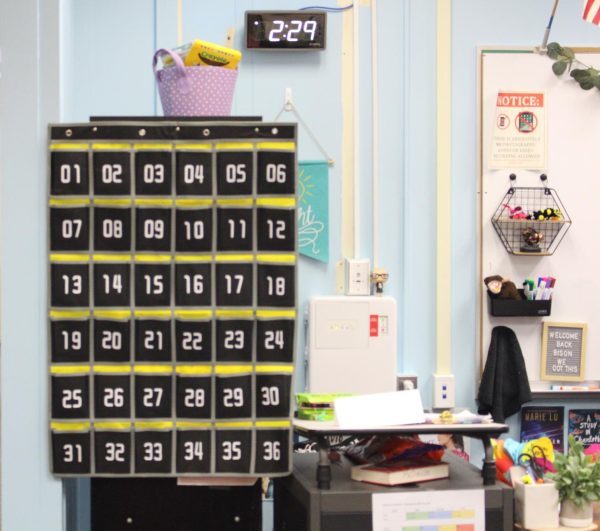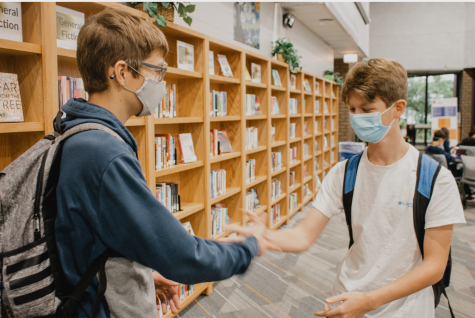BG welcomes new therapy dog, Buck
Buck is here!
The Student Services office provides many teacher resources for students including counselors, therapists and social workers. Coming fourth quarter, the department is gaining a new addition: Buck, the therapy dog.
The idea behind a therapy dog was first introduced by special education teacher Amy Silverman and school psychologist Jennifer Zacharski. The two were inspired by Prospect’s successful therapy dog program and began their own research last spring. They found Buck through a program called Paws Giving Independence (PGI).
“After we got the approval, I started networking and contacted about 50 organizations across the country: shelters, veterinarians, breeders, trainers and service dog organizations,” Silverman said. “I finally got a phone call from PGI explaining what their organization does; they find homes for therapy dogs. They are a non–profit organization, run 100% on volunteers and have been taking care of everything.”
Through the PGI organization, Silverman was set up with Buck, a two–year–old boxer mix. In preparation for working as a therapy dog, he was temperament tested and completed six weeks of facility training in a women’s correctional
facility. Once a week, Silverman drives toPeoria for her own training with Buck.
“It is a very structured process,” Zacharski said. “It takes time, but we want it to be successful, so we’re willing to do whatever it takes.”
Currently, Buck’s two handlers will be Zacharski and Silverman. When he starts working full–time, he will operate mainly in the special education department and in the student services office. On the evenings and weekends, Buck will go home with Silverman, who will be his owner once the training is completed.
“Buck will be available for everyone, but there will be some transitioning,” Silverman said. “Right now we need to be consistent and help him get used to his new environment.”
Service dogs are specifically trained to deal with people in stressful or emotional environments. While Buck may look like any other dog, he has been tested to ensure he can meet the job’s demands.
“He is very people–oriented,” Zacharski said. “He is more interested in people than anything else. It makes him good at his job.”
While at school, Buck will wear a vest to make it clear that he is on the job.
“He has commands he has to follow when he’s ‘at work’ and he has to behave a certain way,” Silverman said. “But when you get him in the car and [take] the vest off, he becomes a family pet.”
Buck is being trained in over 20 commands, such as hugging, providing a calming pressure and how to high–five.
“Since Buck is a therapy dog, only the handlers can give him commands,” Silverman said. “We need to make sure we are being consistent in the commands and properly administering them to prevent confusion.”
The school day is something that many people find stressful, which is where Buck comes in to help release some of that tension.
“There are studies that prove that petting a dog can lower your cortisol levels, a hormone associated with stress, and also produces oxytocin which is sometimes called the love hormone,” Zacharski said. “Anyone can benefit.”
Buck will help students in the special education program become more confident and help them form relationships both inside and outside the school.
“Part of [his impact] is the juxtaposition between something soothing, like a dog, and a place we commonly associate with stress, like a school,” Zacharski said. “Buck can help students relax, form connections and focus on education.
In February, the program will begin to roll out with Buck’s first week–long visit.
“He has come for a few day trips before, but this will be his first week at the school,” Silverman said. “By fourth quarter he will be here daily, and hopefully we can get him tenured in no time.”
Follow Buck’s adventures on Twitter @BG_Buck.














